Macro market indicators
One of our preferred market valuation indicators is the CAPE model derived from macroeconomic fundamentals.
The basic idea is that lower levels of interest rates increase the sustainable market multiple (cash flows discounted at a lower rate should raise the NPV of those cash flows, all else equal) and that changes (shifts lower) in the interest rate, reflecting lower growth expectations, should decrease the market multiple.
Restated, we distinguish between levels and changes in levels. Conversely higher rates are bad for market multiples, but if rates are going up because growth is robust, that is usually quite supportive to higher multiples.
Now the “natural” rate, called R*, is just a low-frequency measure of the actual interest rate. Below is a graph of the potential output growth rate, and these various natural rates, including our predicted R*. You can see there is some sort of relationship between them.
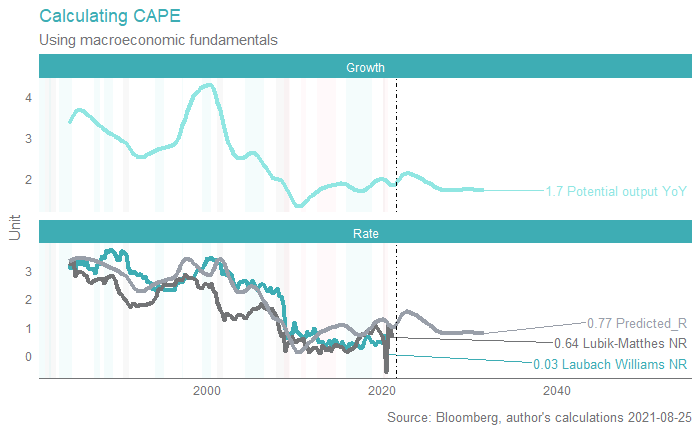
And the exact relationship we use is specified by a third-order polynomial regression to those growth forecasts. These outputs are shown below. Give us a plausible forecast of growth, and we can calculate a plausible R*.
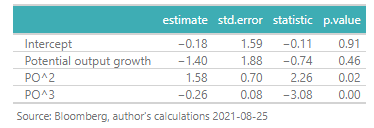
In our model we also control for the effect on inflation, which is an interesting side note, but not the point of this note. However, it plays a role, and we account for it.
So, recall, we’ve wanted to forecast the interest rate used in our model, which we will now use as part of the model to forecast the CAPE ratio. Putting this mix of potential growth, levels and changes in natural rates, and inflation, we can create the below model, and we find all of our relationships have the right sign and generally expected magnitudes.
Higher growth expectations, and changes higher in interest rates raise the multiple, higher inflation and higher interest rates lower it.
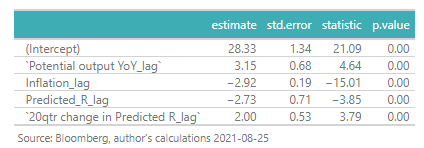
Based on this mix of potential growth, levels and changes in natural rates, and inflation, we can solve for the implied CAPE ratio of around 26 times, on a sustainable basis, versus 37.86 currently. You can also see the model correctly highlighted the extent of the market overvaluation in the 2000's, when the Shiller PE hit a high of around 40 times.
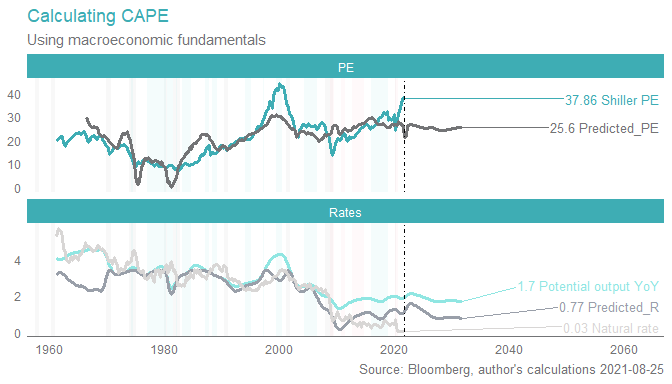
Now, we’ve not been quite so worried about this valuation signal, but, with the US Federal Reserve starting to signal a taper, it becomes, to our mind, more relevant.
We’ve got Jackson Hole kicking off from Friday, and we think it reasonable odds that the Fed will use the opportunity to lay the ground work on a prospective taper.
We see today that secular growth narrative plays, like tech, which do well with low rates, are very strong, suggesting that the market sees good odds of a benign outcome. Understandable, but risky, to us. Likewise commodity stocks, which have done well over the past few days (iron ore, oil, most other commodities, all bouncing) would be vulnerable in that scenario.
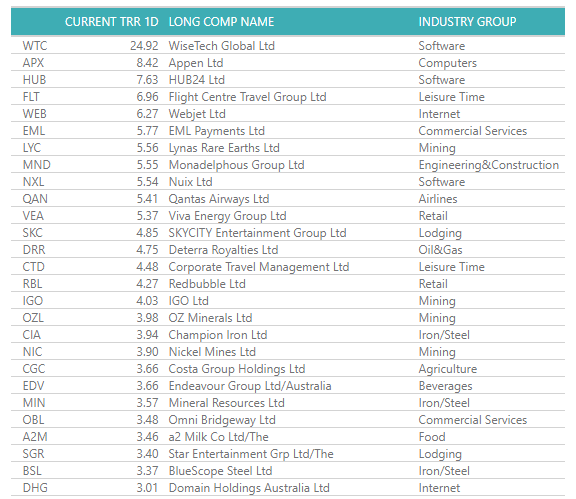
Yesterday, we also saw COVID case rates hit over 900 in NSW. These numbers appear to have good momentum, and are still well explained by an exponentially fitted curve. In other words, it doesn’t appear that the peak is in.
But many of the COVID recovery plays are trading as if it is - companies including:
- Star Entertainment Group (ASX: SGR)
- Qantas (ASX: QAN)
- Flight Centre (ASX: FLT)
- Scentre Group (ASX: SCG)
- Webjet (ASX: WEB).
Arguably, this is due to the increasing acceptance of COVID passports. But in the interim, this is a dangerous game of trading off the future (which likely doesn’t have COVID) with clear evidence of things getting worse, at the margin.
Never miss an insight
Enjoy this wire? Hit the ‘like’ button to let us know. Stay up to date with my content by hitting the ‘follow’ button below and you’ll be notified every time I post a wire. Not already a Livewire member? Sign up today to get free access to investment ideas and strategies from Australia’s leading investors.
5 topics
5 stocks mentioned

